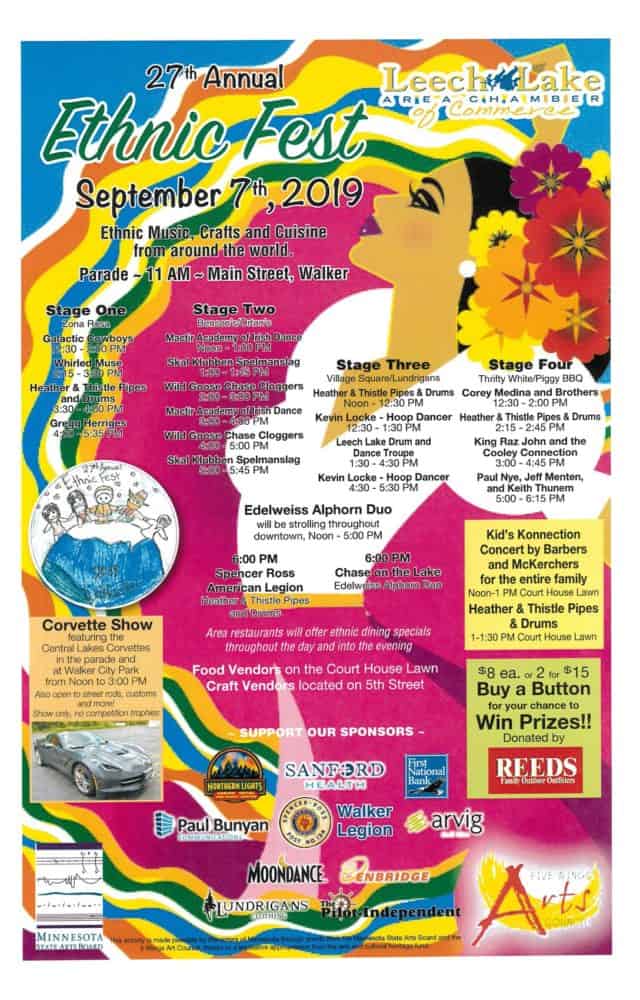Blog
https://www.youtube.com/watch?v=Nn_ZuSgp5bE
more...The center of the galaxy doesn’t look like much, even if you’re lucky enough to live in a place where the night sky is sufficiently dark to see the bands of the Milky Way. In visible light, the stars between here and there blur together into a single brilliant source, like a bright beam hiding the lighthouse behind it. But in other types of radiation—radio waves, infrared, X-rays—astronomers have detected the presence of an object with the mass of four million suns packed into a region smaller than our solar system: a supermassive black hole. Astronomers call it Sagittarius A*, or Sgr A* (pronounced “sadge A star”) for short, because it’s located (from our point of view) in the Sagittarius constellation. Discovering the Milky Way’s black hole has helped cement the idea that the center of nearly every large galaxy harbors a supermassive black hole. But despite mounting evidence for black holes, we still haven’t seen one directly. That may change very soon. Astronomers are about to begin an observing project that may result in what was once thought impossible: a picture of the supermassive black hole at the center of our galaxy.
more...Ronald Charles McKernan (September 8, 1945 – March 8, 1973), known as Pigpen, was an American singer and musician. He was a founding member of the San Francisco band the Grateful Dead and played in the group from 1965 to 1972.
McKernan grew up heavily influenced by African-American music, particularly the blues, and enjoyed listening to his father’s collection of records and taught himself how to play harmonica and piano. He began socializing around the San Francisco Bay Area, becoming friends with Jerry Garcia. After the pair had played in various folk and jug bands, McKernan suggested they form an electric group, which became the Grateful Dead. He was the band’s original frontman as well as playing harmonica and electric organ, but Garcia and bassist Phil Lesh‘s influences on the band became increasingly stronger as they embraced psychedelic rock. McKernan struggled to keep up with the changing music, causing the group to hire keyboardist Tom Constanten, with McKernan’s contributions essentially limited to vocals, harmonica and percussion from November 1968 to January 1970. He continued to be a frontman in concert for some numbers, including covers of Bobby Bland‘s “Turn On Your Love Light” and the Rascals‘ “Good Lovin’“.
Unlike the other members of the Grateful Dead, McKernan avoided psychedelic drugs, preferring to drink alcohol (namely whiskey and flavored fortified wine). By 1971, his health had been affected by alcoholism and liver damage and doctors advised him to stop touring. Following a hiatus, he resumed touring with the group in December 1971 but was forced to retire from touring altogether in June 1972. McKernan was found dead of a gastrointestinal hemorrhage on March 8, 1973, aged 27, and is buried at Alta Mesa Memorial Park in Palo Alto.
more...James Earl Clay (b. Sept. 8, 1935, Dallas, Texas – d. there, Jan. 1, 1994) was an American hard bop jazz tenor saxophonist and flutist. While in school Clay played alto saxophone, became a professional musician, and played with local bands in Dallas, including with Booker Ervin. Later, he went to California, there he played in 1957 in Red Mitchell‘s quartet and on recordings with Lawrence Marable. at the end of 1957 he returned to his hometown of Dallas, and served in the Army in 1959.
After a few decades of obscurity, Clay enjoyed a modestly successful career revival in the late 1980s and early 1990s.
more...Guitar Shorty (born David William Kearney, September 8, 1939 in Houston, Texas, United States) is an American blues guitarist, singer and songwriter. He is well known for his explosive guitar style and wild stage antics. Billboard magazine said, “his galvanizing guitar work defines modern, top-of-the-line blues-rock. His vocals remain as forceful as ever. Righteous shuffles…blistering, sinuous guitar solos.”
Shorty was born in Houston but grew up mainly in Kissimmee, Florida, where he began playing the guitar at an early age and began leading a band not long after. During his time in Tampa Bay, Florida, at age 16 he received his nickname, Guitar Shorty, when it mysteriously showed up on the marquee of the club he was playing as ‘The Walter Johnson Band featuring Guitar Shorty.’He steadily began to garner accolades from his peers and, soon after, he joined the Ray CharlesBand for a year. He recorded his first single in 1957, “You Don’t Treat Me Right”, for the Cobra label under the direction of Willie Dixon after Dixon saw him playing with the Walter Johnson Orchestra. Eventually, he joined Guitar Slim‘s band and moved to New Orleans, Louisiana. Slim inspired Shorty to incorporate more showmanship into his live performance style. Before long, Shorty was doing somersaults and flips on stage.
more...Wilbur Bernard Ware (September 8, 1923 – September 9, 1979) was an American jazz double bassist He was a staff bassist at Riverside in the 1950s, recording with J.R. Monterose, Toots Thielemans, Tina Brooks, Zoot Sims, and Grant Green.
Ware taught himself to play banjo and bass. In the 1940s, he worked with Stuff Smith, Sonny Stitt, and Roy Eldridge. He recorded with Sun Ra in the early 1950s. Later in the 1950s, settling in New York City, Ware played with Eddie Vinson, Art Blakey, and Buddy DeFranco. His only album recorded as a leader during his lifetime was The Chicago Sound, from 1957 when he worked for Riverside. He made jazz instructional albums for Music Minus One. In 1958, Ware was one of 57 jazz musicians to appear in the photograph A Great Day in Harlem.
Ware was a member of the Thelonious Monk quartet from 1957 to 1958. He also performed with the Sonny Rollins Trio live at the Village Vanguard.
Narcotics addiction resulted in his return to Chicago in 1963 and a period of incarceration. He was inactive musically for about six years. In 1969, Ware played with Clifford Jordan, Elvin Jonesand Sonny Rollins. He died from emphysema in Philadelphia in 1979.
https://www.youtube.com/watch?v=XligryRDuPY
more...Tajikistan
more...Performing today Saturday Sept 7th 3-445pm with Reggae singer, Yard Style, crucial and direct with Belize born KingRasJohn at Ethnic Fest 2019 on Leech Lake Reservation.
more...NASA’s Wide-field Infrared Survey Explorer, or WISE, captured this image of a star-forming cloud of dust and gas located in the constellation of Monoceros. The nebula, commonly referred to as Sh2-284, is relatively isolated at the very end of an outer spiral arm of our Milky Way galaxy. The most interesting features in Sh2-284 are what astronomers call “elephant trunks.” Elephant trunks are monstrous pillars of dense gas and dust. In this WISE image, the trunks are seen as small columns of gas stretching towards the center of the void in Sh2-284, like little green fingers with yellow fingernails. The most notable one can be seen on the right side of the void at about the 3 o’clock position. It appears as a closed hand with a finger pointing towards the center of the void. That elephant trunk is about 7 light-years long. Deep inside Sh2-284 resides an open star cluster, called Dolidze 25, which is emitting vast amounts of radiation in all directions, along with stellar winds. These stellar winds and radiation are clearing out a cavern inside the surrounding gas and dust, creating the void seen in the center. The Sh2-284 nebula is classified as an HII region. HII regions go hand in hand with star formation. They’re hot, young, bright stars, with ages ranging from 1.5 to 13 million years. In comparison, the sun is about 4.6 billion years old. The colors used in this image represent specific wavelengths of infrared light. Blue and cyan (blue-green) represent light emitted at wavelengths of 3.4 and 4.6 microns, which is predominantly from stars. Green and red represent light from 12 and 22 microns, respectively, which is mostly emitted by dust.
more...Christine Ellen Hynde (born September 7, 1951) is an American singer-songwriter and musician. She is a founding member and the guitarist, lead vocalist, and primary songwriter of the rock band The Pretenders, as well as its only constant member.
Hynde formed The Pretenders in 1978 with Pete Farndon, James Honeyman-Scott and Martin Chambers. She has also released a number of songs with other musicians including Frank Sinatra, Cher and UB40, and she released the solo album Stockholm in 2014. Hynde was inducted into the Rock and Roll Hall of Fame in 2005 as a member of The Pretenders.
Hynde was born in Akron, Ohio, the daughter of a part-time secretary and a Yellow Pages manager. She graduated from Firestone High School in Akron, but stated that “I was never too interested in high school. I mean, I never went to a dance, I never went out on a date, I never went steady. It became pretty awful for me. Except, of course, I could go see bands, and that was the kick. I used to go to Cleveland just to see any band. So I was in love a lot of the time, but mostly with guys in bands that I had never met. For me, knowing that Brian Jones was out there, and later that Iggy Pop was out there, made it kind of hard for me to get too interested in the guys that were around me. I had, uh, bigger things in mind.
more...James Milton Campbell Jr. (September 7, 1934 – August 4, 2005), better known as Little Milton, was an American blues singer and guitarist, best known for his hit records “Grits Ain’t Groceries,” “Walking the Back Streets and Crying,” and “We’re Gonna Make It.”
Milton was born James Milton Campbell Jr., in the Mississippi Delta town of Inverness and raised in Greenville by a farmer and local blues musician. By age twelve he was a street musician, chiefly influenced by T-Bone Walker and his blues and rock and roll contemporaries. He joined the Rhythm Aces in the early part of the 1950s, a three piece band who played throughout the Mississippi Delta area. One of the group was Eddie Cusic who taught Milton to play the guitar. In 1952, while still a teenager playing in local bars, he caught the attention of Ike Turner, who was at that time a talent scout for Sam Phillips‘ Sun Records. He signed a contract with the label and recorded a number of singles. None of them broke through onto radio or sold well at record stores, however, and Milton left the Sun label by 1955.
After trying several labels without notable success, including Trumpet Records, Milton set up the St. Louis based Bobbin Records label, which ultimately scored a distribution deal with Leonard Chess‘ Chess Records. As a record producer, Milton helped bring artists such as Albert King and Fontella Bass to fame, while experiencing his own success for the first time. After a number of small format and regional hits, his 1962 single, “So Mean to Me,” broke onto the Billboard R&B chart, eventually peaking at #14.
more...Charles Hardin Holley (September 7, 1936 – February 3, 1959), known professionally as Buddy Holly, was an American musician and singer-songwriter who was a central and pioneering figure of mid-1950s rock and roll. He was born in Lubbock, Texas, to a musical family during the Great Depression, and learned to play guitar and sing alongside his siblings. His style was influenced by gospel music, country music, and rhythm and bluesacts, which he performed in Lubbock with his friends from high school.
He made his first appearance on local television in 1952, and the following year he formed the group “Buddy and Bob” with his friend Bob Montgomery. In 1955, after opening for Elvis Presley, he decided to pursue a career in music. He opened for Presley three times that year; his band’s style shifted from country and western to entirely rock and roll. In October that year, when he opened for Bill Haley & His Comets, he was spotted by Nashville scout Eddie Crandall, who helped him get a contract with Decca Records.
Holly’s recording sessions at Decca were produced by Owen Bradley, who had become famous for producing orchestrated country hits for stars like Patsy Cline. Unhappy with Bradley’s musical style and control in the studio, Holly went to producer Norman Petty in Clovis, New Mexico, and recorded a demo of “That’ll Be the Day“, among other songs. Petty became the band’s manager and sent the demo to Brunswick Records, which released it as a single credited to “The Crickets“, which became the name of Holly’s band. In September 1957, as the band toured, “That’ll Be the Day” topped the US and UK singles charts. Its success was followed in October by another major hit, “Peggy Sue“.
The album Chirping Crickets, released in November 1957, reached number five on the UK Albums Chart. Holly made his second appearance on The Ed Sullivan Show in January 1958 and soon after, toured Australia and then the UK. In early 1959, he assembled a new band, consisting of future country music star Waylon Jennings (bass), famed session musician Tommy Allsup (guitar), and Carl Bunch (drums), and embarked on a tour of the midwestern U.S. After a show in Clear Lake, Iowa, he chartered an airplane to travel to his next show, in Moorhead, Minnesota. Soon after takeoff, the plane crashed, killing Holly, Ritchie Valens, The Big Bopper, and pilot Roger Peterson in a tragedy later referred to by Don McLean as “The Day the Music Died“.
During his short career, Holly wrote and recorded several songs. He is often regarded as the artist who defined the traditional rock-and-roll lineup of two guitars, bass, and drums. He was a major influence on later popular music artists, including Bob Dylan, The Beatles, The Rolling Stones, Eric Clapton, and Elton John. He was among the first artists inducted into the Rock and Roll Hall of Fame, in 1986. Rolling Stone magazine ranked him number 13 in its list of “100 Greatest Artists”.
more...Walter Theodore “Sonny” Rollins (born September 7, 1930) is an American jazz tenor saxophonist who is widely recognized as one of the most important and influential jazz musicians. In a seven-decade career, he has recorded over sixty albums as a leader. A number of his compositions, including “St. Thomas“, “Oleo“, “Doxy“, “Pent-Up House”, and “Airegin“, have become jazz standards. Rollins has been called “the greatest living improviser” and the “Saxophone Colossus”.
Rollins was born in New York City to parents from the United States Virgin Islands. The youngest of three siblings, he grew up in central Harlem and on Sugar Hill, receiving his first alto saxophone at the age of seven or eight. He attended Edward W. Stitt Junior High School and graduated from Benjamin Franklin High School in East Harlem. Rollins started as a pianist, changed to alto saxophone, and finally switched to tenor in 1946. During his high school years, he played in a band with other future jazz legends Jackie McLean, Kenny Drew, and Art Taylor.
more...Massive stars in our Milky Way Galaxy live spectacular lives. Collapsing from vast cosmic clouds, their nuclear furnaces ignite and create heavy elements in their cores. After a few million years, theenriched material is blasted back into interstellar space where star formation can begin anew. The expanding debris cloud known as Cassiopeia A is an example of this final phase of the stellar life cycle. Light from the explosion which created this supernova remnant would have been first seen in planet Earth’s sky about 350 years ago, although it took that light about 11,000 years to reach us. This false-color image, composed of X-ray and optical image data from the Chandra X-ray Observatory and Hubble Space Telescope, shows the still hot filaments and knots in the remnant. It spans about 30 light-years at the estimated distance of Cassiopeia A. High-energy X-ray emission from specific elements has been color coded, silicon in red, sulfur in yellow, calcium in green and iron in purple, to help astronomers explore the recycling of our galaxy’s star stuff. Still expanding, the outer blast wave is seen in blue hues. The bright speck near the center is a neutron star, the incredibly dense, collapsed remains of the massive stellar core.
more...Charles Moffett (September 6, 1929 – February 14, 1997) was a free jazz drummer.
Moffett served in the United States Navy, after which he pursued boxing before studying music at Huston-Tillotson College in Austin. Moffett married in 1953 (Coleman was best man, and performed at the wedding), then began teaching music at a public school in Rosenberg, Texas
In 1961, Moffett moved to New York City to work with Ornette Coleman, but the saxophonist soon went into a brief retirement period. Moffett worked with Sonny Rollins, appeared on Archie Shepp‘s album Four for Trane, and led a group that included Pharoah Sanders and Carla Bley. When Coleman returned to performing in 1964, he formed a trio with Moffett and bassist David Izenzon. Moffett also performed on vibraphone.
Moffett began teaching music at New York Public Schools as a way to make ends meet when Coleman made only sporadic performances. Moffett taught at P.S. 58 (Carrol School) in Brooklyn and at P.S. 177 M (under the Manhattan Bridge and now defunct). He also taught at a Brooklyn High School. Moffett moved to Oakland, California, where he served as the city’s music director, and was later the principal of the alternative Odyssey public school in Berkeley in the mid-1970s. The title of his first solo album The Gift is a reference to his love of teaching music. His then 7-year-old son Codaryl played drums on that album. Moffett later returned to Brooklyn, NY and taught at P.S. 142 Stranahan Junior High School (Closed in 2006) and at P.S. 58 Carroll School.
more...More Posts
- World Music with Northern Cree
- Daily Roots with Slyford Walker
- Rhythm Roots Workshop at PRI St Louis Pk
- The Cosmos with NGC 6872
- Sam Rivers Day
- Shadow Wilson Day
- World Music with Noe hernandez cantarell
- Daily Roots with the Twinkle Brothers
- The Cosmos with NGC 3981
- Fats Navarro Day
- Blind Melon Jefferson Day
- World Music with Eugenia Georgieva
- Daily Roots with Playing for Change
- Diego LaBriola Birthday
- The Cosmos with M63
- John Coltrane Day
- Ray Charles Day
- World Music with Simo Lagnawi
- Daily Roots with Playing for Change
- The Cosmos with Doradus 30



